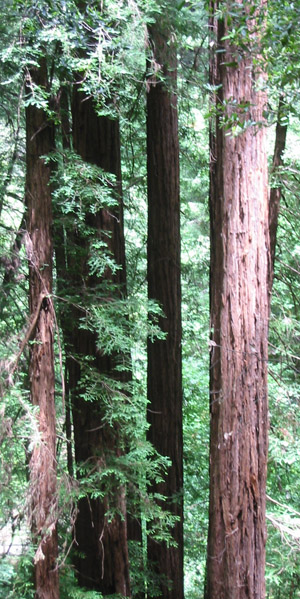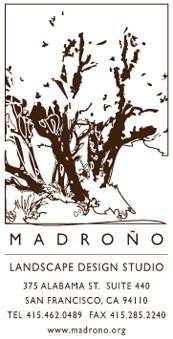 The trappings of prosperity pursued by contemporary city dwellers emphasize the appeal of "living large," hinting that the ends of financial aggrandizement will justify any means. But here in the Bay Area, we also enjoy a wealth of nearby natural resources that remind us of just how small any one person is in the grander scheme of Earth. These two sides of the spectrum meet in the old-growth redwood forest of Muir Woods, located only 15 miles north of San Francisco's financial district yet rooted in a time that predates our mercantile madness by millions of years.
The trappings of prosperity pursued by contemporary city dwellers emphasize the appeal of "living large," hinting that the ends of financial aggrandizement will justify any means. But here in the Bay Area, we also enjoy a wealth of nearby natural resources that remind us of just how small any one person is in the grander scheme of Earth. These two sides of the spectrum meet in the old-growth redwood forest of Muir Woods, located only 15 miles north of San Francisco's financial district yet rooted in a time that predates our mercantile madness by millions of years.
Here the coast redwood (Sequoia sempervirens), the tallest species of tree in the world, grows to heights of 250 feet and dwarfs the oak, bay, madrone, and douglas fir that usually dominate the canopy of northern California forests. Walking among these giants, one feels the hushed weight of history, a sense of being watched over by the elders. In fact, many of the specimens here were already reaching for the clouds when Columbus set sail -- the mature trees of Cathedral and Bohemian groves average between 600 and 800 years old, with the oldest at least 1,100 years old. But even these are young for a redwood, which can live to more than 2,200 years of age and grow over 350 feet tall.
First-time visitors to Muir Woods often crane their necks and stare upward like tourists in downtown Manhattan, spellbound at the spectacle of the skyscraping trees. But don't forget to look down -- the understory deserves its share of attention too, especially now at the beginning of the year when some of our greatest botanical treasures come into bloom.

